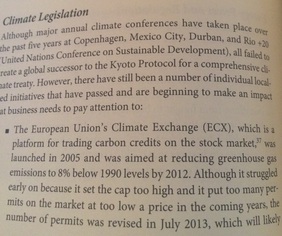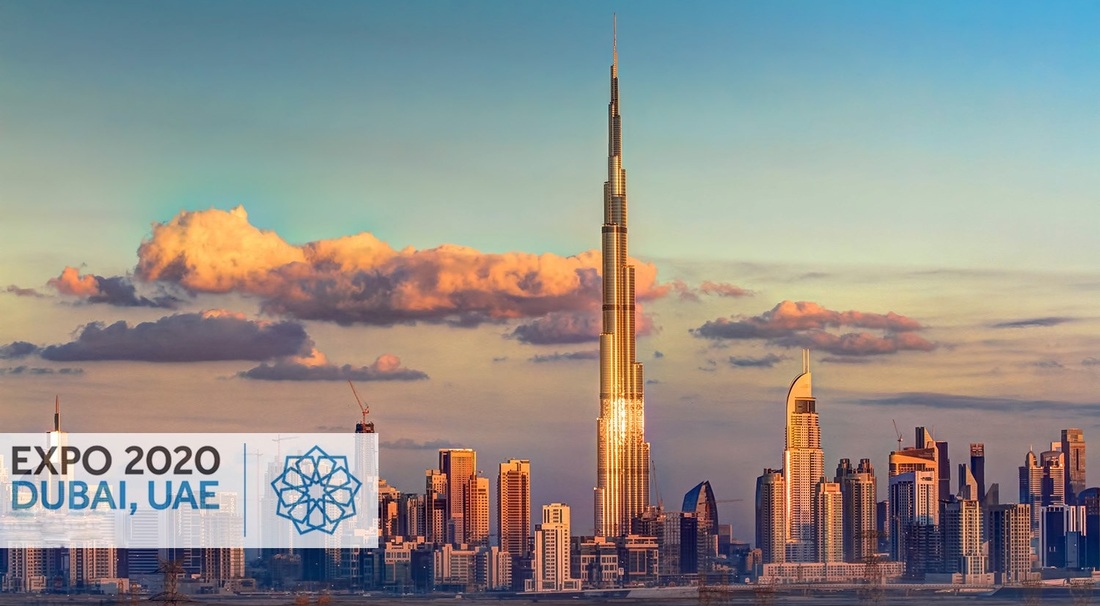 While science evolves, the overwhelming consensus among scientists is that climate change is manmade. The Copenhagen Climate Change Conference which took place in 2009 raised climate change policy to the highest political level with 115 world leaders in attendance. The question of a worldwide climate deal has been up in the air since talks fell apart at the 2009 UN conference in Copenhagen, and that was the last time that engagement at such a high level took place. Click here for details about this Conference. The latest reports from the Intergovernmental Panel Climate Change highlighted the acceleration of global warming and its effects. Despite strong involvement of the European Union and France in post-Kyoto negotiations, as well as agreed-upon concrete commitments, it is evident that government efforts alone will not singlehandedly prevent climate change. To achieve this, it is important to involve all stakeholders such as: national governments, businesses, financial institutions, scientists, civil society and private citizens. The next Climate Change Conference will be in Lima, Peru in December this year. Most view this upcoming COP as an opportunity to pave the way to signing a new treaty : Click here to access documents and the agenda for this upcoming COP. The most important sustainability question centres around how we can we sustain human life, economic prosperity and support developing countries without pushing dangerous levels of Green House Gas emissions. Many argue that this is indeed the greatest challenge for humanity in this century. What is needed is an agreement that will be effective and put the world on a pathway towards a decarbonised future, most likely to take place at the Climate Change Conference in Paris in 2015. It is encouraging to see that a number of events took place in recent months which indicate serious intention and political will, creating momentum behind action towards managing climate change. Those events include: 1- UN Climate Summit 2014 in September 2014 UN Secretary-General Ban Ki-moon invited world leaders, from government, finance, business, and civil society to Climate Summit 2014 this 23 September to galvanise and catalyse climate action. The original concept was to use this event as an opportunity to bring together the eaters of China and the US as well as the G8 leaders to commit to negotiations and invest in capital to ensure real momentum is gained as we head into paris later this year. The Summit brought together 130 governments who collectively made a concerted effort towards global action on climate change. 2- EU 2030 Package EU leaders agreed on 23 October 2014 the domestic 2030 greenhouse gas reduction target of at least 40% compared to 1990 together with the other main building blocks of the 2030 policy framework for climate and energy, as proposed by the European Commission in January 2014. This 2030 policy framework aims to make the European Union's economy and energy system more competitive, secure and sustainable and also sets a target of at least 27% for renewable energy and energy savings by 2030.agreement signed china and us to reduce emissions by 20% and china also agreed to peak and reduce emissions by 2030 3- World Summit of Regions for Climate Chaired by Arnold Schwarzenegger, former Governor of California and Founder of non-profit organisation, R20, this summit brought together regions and local governments from across five continents, as well as economic leaders, in order to formulate a new international agreement on climate change. The summit ended with concrete commitments for sustainable development, by signing the Paris Declaration – a real road map for the United Nations conference on climate change (COP21) that will take place in Paris in 2015. The Summit closed with a signing ceremony involving six networks of cities and regions who commit to the Paris Declaration. These are all positive indicators towards a tangible global agreement on climate change, the challenge is to ensure that concrete outcomes emerge.
5 Comments
Reported by Erika Lindholm and Sandra Anani
"Energy management" is a term that has multiple meanings, but mainly it relates to conserving energy in various organisations as well as private homes. When it comes to energy saving, energy management is concerned specifically with the process of monitoring, controlling and conserving energy in a building, or potentially within an organisation . With carbon emissions from buildings accounting for a significant proportion of emissions, it is increasingly evident that large savings can be made through effective energy management. Taking the lead on such sustainability matters can play a key role in the success of any business. Not only does effective energy management help companies to save on significant energy costs, it also helps drive their sustainability program and their reputation. Moreover, it helps to conserve the environment by reducing the organisation’s carbon footprint. Here are three simple steps that can help your organisation to manage energy more effectively and efficiently: 1- Senior management commitment Without the support of senior managers, energy management will be difficult to launch and embed. 2- Developing an energy policy An energy policy is a written statement of senior management's commitment to managing energy and its environmental impacts. Sometimes, it can be part of a wider organisational sustainability policy. 3- Launching an energy strategy An energy strategy is a working document setting out how energy will be managed in an organisation. It should include a plan and involve a review of the current status as a benchmark. You can access more information by clicking here for the Middle East Energy Institute. From a practical point of view, you can seek opportunities to save energy; the first step is data collection. Start to measure by ensuring accurate metering is in place in all areas of operation and isolate them. This includes buildings, data centres, production, transportation etc. The second step, looking for opportunities, is to identify how much energy each area consumes and how energy can be saved. When collecting the information it can be difficult to get complete data sets of information for all areas, that is why it is important to focus on the larger areas which have a significant impact and are metered accurately, rather than smaller areas which may not have adequate metering. The last step is developing an action plan that targets the opportunities which have been identified. As always, a p,an, do,check, review approach should be followed to ensure your energy saving aspirations are realised. New buildings are being designed to more stringent standards through various regulations and guidelines such as the required local planning permissions and requirements, e.g. Part L of the UK Building Regulations (which focuses on conservation of fuel and power), and the Abu Dhabi Urban Planning Council’s Pearl Rating. However, generally speaking a large proportion of existing building and infrastructure will exist well into the future and it is clear that energy use in these buildings must be fully addressed as well. New energy management standards such as ISO 50001 can also be helpful and offer a wealth of information and guidance. By conducting an energy breakdown and identifying the main areas for improvement a company can develop an energy forecasting mechanism that will help in for seeing future energy needs and set future energy/carbon targets. An effective energy management cycle has short-term and long-term benefits for any organisation. It improves performance and productivity and ensures that these are sustainable over time. More importantly, it helps to conserve scarce resources and reduces climate change impacts. Get in touch with STA to find out more by email: [email protected]  Reported by: Erika Lindholm Ever since the first Great Fair in London 1851 World Expos have excited and inspired millions of people around the world. World Expos have become one of the world’s largest and oldest mega-events, attracting millions of visitors who explore and discover pavilions, exhibits and cultural events staged by hundreds of participants including nations, international organisations and businesses. The World Expo in Dubai in 2020 will be the first to be held in the MENA & SA (Middle East and North Africa & South Asia) region. The UAE has selected a theme called “Connecting Minds, Creating the Future”. Dubai’s Arabic name - Al Wasl - means ‘the connection’ and this is reflected in Dubai’s modern day position as a central hub between East and West. With an anticipated 25 million visits to the Dubai Expo, and 70 per cent of visitors predicted to come from overseas, it will be the most globally inclusive event in Expo history. The vision for Expo 2020, according to the organisers, is about creating opportunity for the wider region and developing a global platform to showcase the innovative solutions required to address the future of Mobility, Sustainability and Opportunity – the three sub themes for the Expo and key factors that has been identified as drivers for global development. With a significant ecological footprint, according to the WWF Living Planet Report 2007, the UAE has taken major strides to reduce the ecological footprint per capita and continues to do so. In Dubai Etihad ESCO (Energy Service Company) was established in 2013 aiming to make Dubai one of the most sustainable cities in the world, and Dubai built environment a leading example of energy efficiency for the region and the world. Some of the things that are currently being done is changing all outdoor lighting to LED lights, increasing district cooling and retrofitting 30,000 of the buildings in Dubai to be more energy sufficient by 2030. The estimation is that the energy demand will be reduced by 20% by 2020 and by 30% by 2030. Similarly, sustainability is a key priority for the design of Dubai Expo 2020 Master Plan, with detailed targets and strategies have been developed to ensure that sustainability is achieved in the design of Dubai Expo 2020 pavilions and related buildings and infrastructure. The ambition of Dubai Expo 2020 is to supply at least 50% of the Expo Site’s energy needs over its six-month duration with energy from renewable sources. Emphasis will be placed on integrating solar energy technologies into the Expo Site Master Plan. Furthermore a 25% of reduction in consumption of water across the pavilions and buildings on-site is being targeted, along with a Waste Management Strategy that’s aiming to make sure that reusing materials is being done with the intention of maximising the opportunity of recycling waste material. Post the 2020 Expo, the actual site is expected to enter a new phase of life where approximately 50 % of the assets built for the Expo will become operational and act as a key player in Dubai’s exhibition and conference business. These exhibitions and entertainment facilities create a smart city that will allow the development of the Dubai Trade Centre activities, and act as a new gateway to the new airport of Dubai that will be the largest airport in the world. The Expo 2020 will create new opportunities for more research and development on new technologies that will be adapted especially for the demands of a sustainable UAE. Source: CSR seminar “Building the Sustainability Momentum for UAE Expo 2020 and Beyond” organised by Embassy of Sweden in Abu Dhabi, Business Sweden – the Swedish Trade and Invest Council, and the Dubai Chamber of Commerce & Industry. |
Categories
All
AuthorSandra Anani is passionate about sustainability, with over 19 years’ experience. She has dedicated her career to sustainable development and communications. Archives
November 2022
|


 RSS Feed
RSS Feed
